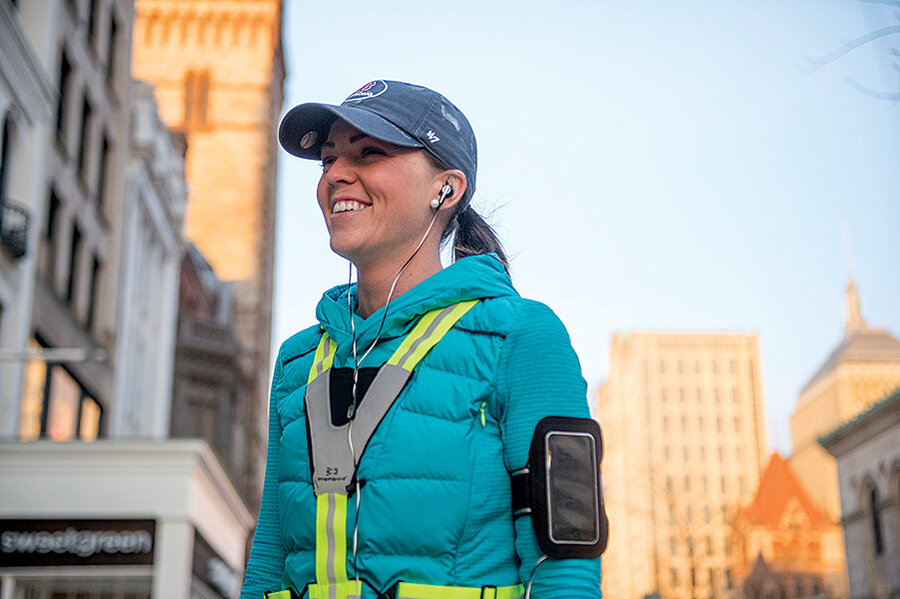Last year, Caitlyn Bransfield was a spectator at the Boston Marathon finish line when she heard an explosion down the street. Seconds later, there was another blast on Boylston Street – this time just 15 feet to her left.
Ms. Bransfield, a tall and poised sales manager at a flower retailer in Boston, wasn't physically hurt in the bombings. But April 15, 2013, stayed with her.
"After two bombs go off, you just wonder, where will the next one be?" she says. She spent that day searching for friends and relatives (none of whom were hurt) amid the chaos unfolding a 10-minute walk from where she lives.
For the next month, Bransfield avoided Boylston Street. "I was too afraid to go back," she says. She also demurred from wearing "Boston Strong" apparel because "I didn't feel very strong," she says.
Last May, Bransfield joined a running club at Marathon Sports, the store outside of which the first bomb had exploded. She had never been a runner, but now "it felt like the natural thing to do," she says.
"I knew the running community would get what I was going through," she says. "I didn't need to say anything, and they just understood. We all scare easily. We all jump at noises."
On a Wednesday that month, Bransfield ran 3.5 miles with the club. The next week, she was back – and has been every week since.
On race day, she'll run on behalf of two charity teams: one raising funds for Massachusetts General Hospital, which treated 39 people injured in the bombings, and Collier Strong, a team running in memory of Sean Collier, the police officer at the Massachusetts Institute of Technology (MIT) in Cambridge who was slain in the attack's aftermath. He and Bransfield attended high school together in Wilmington, Mass.
These days, Bransfield does feel "Boston Strong," she says: "What happened was tragic, but I've tried to make the best of it. I'm stronger because of it."
She pulls up her sleeve to reveal a rubbery "Boston Strong" wristband, plus a runner ID, a step tracker, and a Boston Marathon bracelet.
"This all used to be pearls," she says, laughing. "I guess I'm a runner now."
– Elizabeth Barber, staff writer








